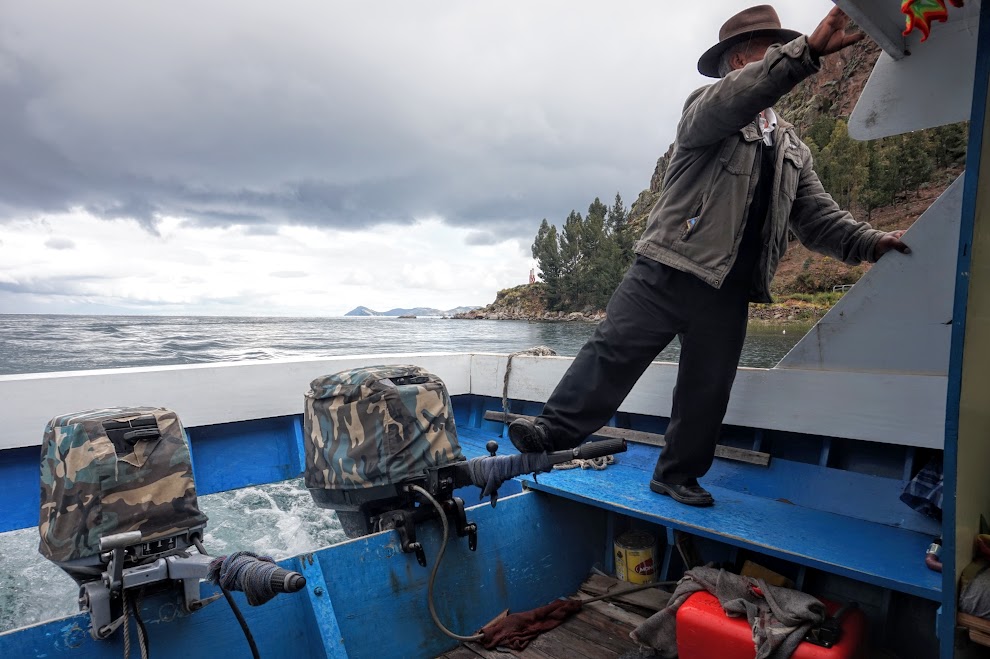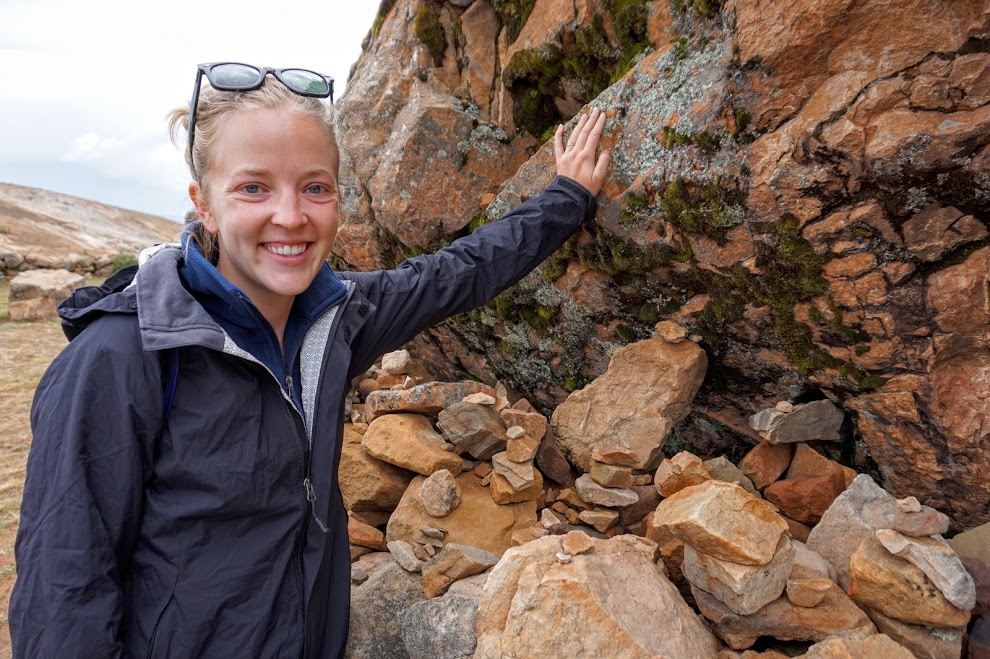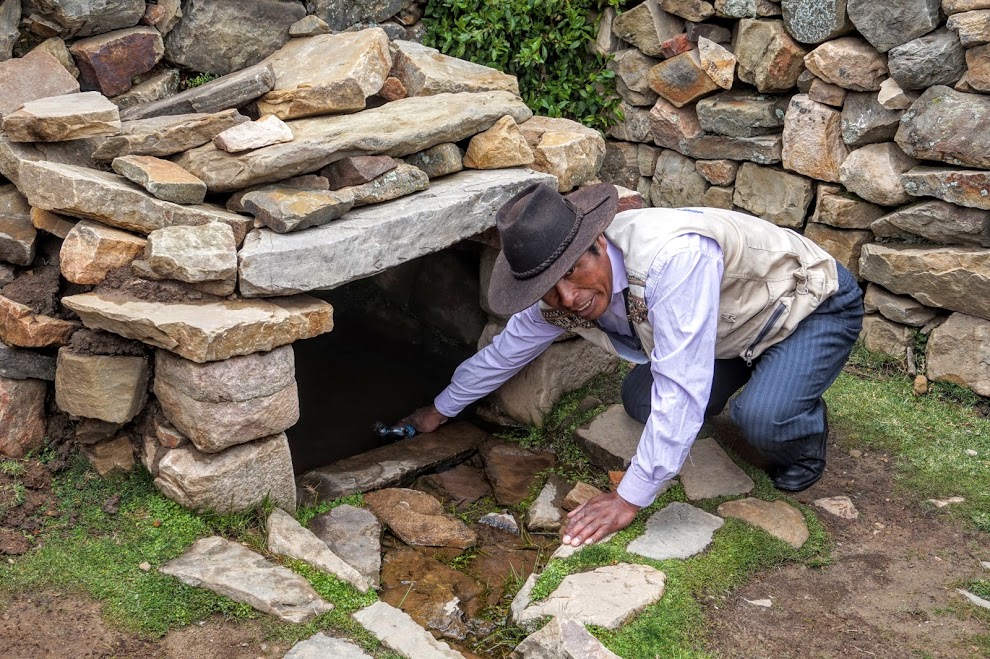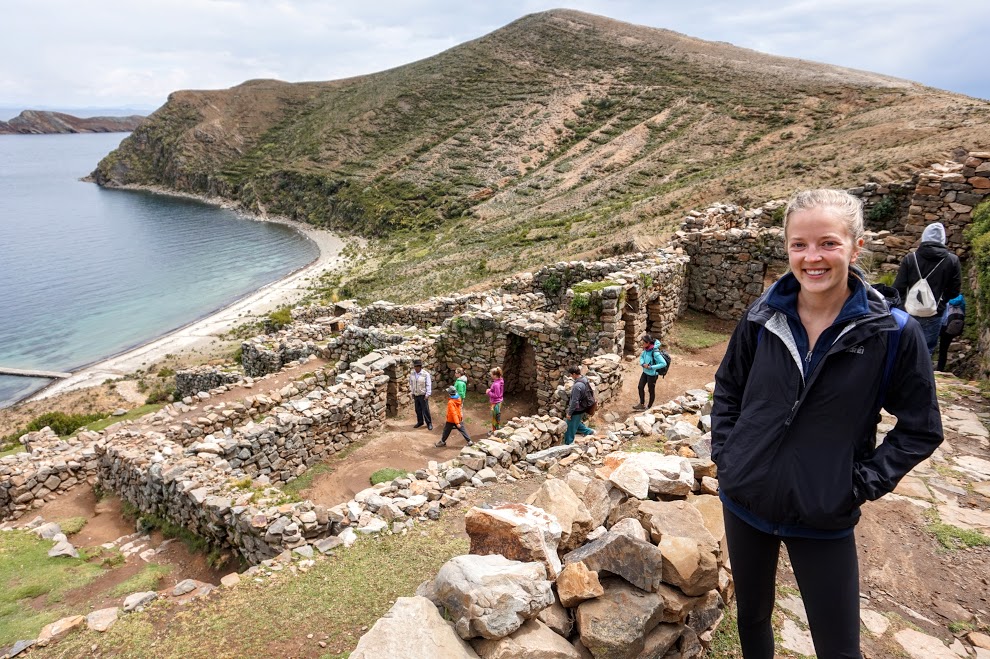Located on the border of Peru and Bolivia, Lake Titicaca is the largest lake in South America and the highest navigable lake in the world. This refers to navigation by commercial boats, although we mostly just saw lots of small boats to take tourists to the various islands. We only spent a few days on the lake where we visited two different cities: Puno, Peru and Copacabana, Bolivia.

Puno was nothing to write home about. Even Peruvians we met said don’t bother staying there, just use it as a layover to switch buses to get to Bolivia. We ended up doing almost exactly that: we arrived in Puno in the afternoon last Sunday to overcast skies and imminent rain. We debated visiting the Uros Islands, a series of floating islands made out of reeds, but ended up skipping those due to heavy rain and several mixed reviews (aka super kitschy and touristy). It might have been interesting to see, but we also realize that it’s ok to skip things sometimes (thanks, Ica).

We left Puno the next day and began our adventure across the Bolivian border. We knew we were going to have to pay an outrageous $160 per person for a visa, but we’re probably never coming back and we wanted to do this now. We ran into a few issues, including the customs agent not accepting some of our $20 bills since they had the teeniest tiny little tears in them, plus he tried to make us show a confirmed flight leaving the country, but we thankfully managed to get by with telling him we are taking a bus to Chile. With all the hoops we had to jump through, everyone else on our bus to Bolivia was able to go through customs in the same time it took the two of us to get our visas processed. Other travelers were surprised to learn that Americans have so many more requirements to get into Bolivia since no one else on our bus needed anything other than the normal entrance form and quick passport stamp. Well, we made it! Now we better get our money’s worth.
Copacabana (the hottest spot south of Havana?) was much cuter than Puno. It was definitely a touristy city, but it was low season so it wasn’t overly crowded and the prices were pretty cheap. We found a small beer bar that night and had some pizza and our first Bolivian cervezas of the trip.


The next morning we took a boat out to Isla del Sol, where the Incas believed the sun was born. The island itself is fairly small, without any cars or paved roads. Many people hike the length of the island in one day, starting in the north and spending the night on the south end. We only did a three hour trip, which was plenty of time for us to take in some beautiful sights and see the Chincana Ruins. We did a tour with a guide who only spoke Spanish, but he was surprisingly easy to understand. At the site of the Incan ruins, we saw the creation rock, where we all gave small offerings to pachamama and touched the rock to feel her energy. We also visited a well with sacred water from which we took a small sip to receive its powers.






After our trip to the island, we had a couple of hours to wander around the city before getting on our bus to La Paz. It was a relaxing and beautiful day, and it felt like the perfect amount of time for what we needed to take in the rest of Copacabana.

